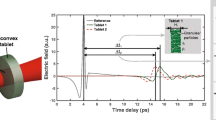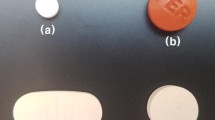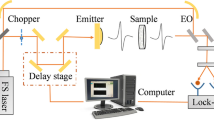Abstract
In this paper, linkages between tablet surface roughness, tablet compression forces, material properties, and the tensile strength of tablets were studied. Pure sodium halides (NaF, NaBr, NaCl, and NaI) were chosen as model substances because of their simple and similar structure. Based on the data available in the literature and our own measurements, various models were made to predict the tensile strength of the tablets. It appeared that only three parameters—surface roughness, upper punch force, and the true density of material—were needed to predict the tensile strength of a tablet. Rather surprising was that the surface roughness alone was capable in the prediction. The used new 3D imaging method (Flash sizer) was roughly a thousand times quicker in determining tablet surface roughness than traditionally used laser profilometer. Both methods gave practically analogous results. It is finally suggested that the rapid 3D imaging can be a potential in-line PAT tool to predict mechanical properties of tablets in production.








Similar content being viewed by others
References
Bos CE, Bolhuis GK, Lerk CF, de Boer JH, Duineveld CAA, Smilde AK, et al. The use of a factorial design to evaluate the physical stability of tablets prepared by direct compression. I. A new approach based on the relative change in tablet parameters. Eur J Pharm Biopharm. 1991;37:204–9.
Sinka IC, Motazedian F, Cocks ACF, Pitt KG. The effect of processing parameters on pharmaceutical tablet properties. Powder Technol. 2009;189:276–84.
Gustafsson C, Nyström C, Lennholm H, Bonferoni MC, Caramella CM. Characteristics of hydroxypropyl methylcellulose influencing compactibility and prediction of particle and tablet properties by infrared spectroscopy. J Pharm Sci. 2003;92:494–504.
Tabasi SH, Fahmy R, Bensley D, O’Brien C, Hoag SW. Quality by design, part I: applications of NIR spectroscopy to monitor tablet manufacturing process. J Pharm Sci. 2008;97:4040–51.
Virtanen S, Antikainen O, Yliruusi J. Determination of the crushing strength of intact tablets using Raman spectroscopy. Int J Pharm. 2008;360:40–6.
Podczeck F. Methods for the practical determination of the mechanical strength of tablets—from empiricism to science. Int J Pharm. 2012;436:214–32.
Akseli I, Cetinkaya C. Air-coupled non-contact mechanical property determination of drug tablets. Int J Pharm. 2008;359:25–34.
Simonaho S-P, Takala TA, Kuosmanen M, Ketolainen J. Ultrasound transmission measurements for tensile strength evaluation of tablets. Int J Pharm. 2011;409:104–10.
Leskinen JTT, Simonaho S-P, Hakulinen M, Ketolainen J. Real-time tablet formulation monitoring with ultrasound measurements in eccentric single station tablet press. Int J Pharm. 2013;442:27–34.
Poon CY, Bhushan B. Comparison of surface roughness measurements by stylus profiler, AFM and non-contact optical profiler. Wear. 1995;190:76–88.
Seitavuopio P, Rantanen J, Yliruusi J. Tablet surface characterisation by various imaging techniques. Int J Pharm. 2003;254:281–6.
Vorburger TV, Marx E, Lettieri TR. Regimes of surface roughness measurable with light scattering. Appl Opt. 1993;32:3401–8.
Windecker R, Tiziani HJ. Optical roughness measurements using extended white-light interferometry. Opt Eng. 1999;38:1081–7.
Wang SH, Quan C, Tay CJ, Shang HM. Surface roughness measurement in the submicrometer range using laser scattering. Opt Eng. 2000;39:1597–601.
Juuti M, van Veen B, Peiponen K-E, Ketolainen J, Kalima V, Silvennoinen R, et al. Local and average gloss from flat-faced sodium chloride tablets. AAPS PharmSciTech. 2006;7(1):E1–6.
García-Muñoz S, Carmody A. Multivariate wavelet texture analysis for pharmaceutical solid product characterization. Int J Pharm. 2010;398:97–106.
Närvänen T, Seppälä K, Antikainen O, Yliruusi J. A new rapid on-line imaging method to determine particle size distribution of granules. AAPS PharmSciTech. 2008;9:282–7.
Soppela I, Airaksinen S, Hatara J, Räikkönen H, Antikainen O, Yliruusi J, et al. Rapid particle size measurement using 3D surface imaging. AAPS PharmSciTech. 2011;12:476–84.
Fell JT, Newton JM. The tensile strength of lactose tablets. J Pharm Pharmacol. 1968;20:667–8.
Krogars K, Antikainen O, Heinämäki J, Laitinen N, Yliruusi J. Tablet film-coating with amylose-rich maize starch. Eur J Pharm Sci. 2002;17:23–30.
Woodham RJ. Photometric method for determining surface orientation from multiple images. Opt Eng. 1980;19:139–44.
Eriksson L, Johansson E, Kettaneh-Wold N, Trygg J, Wikström C, Wold S. Multi- and megavariate data analysis part I: basic principles and applications. Umeå: Umetrics Academy; 2006.
Lindberg N-O, Jönsson C, Holmquist B. Optimization of disintegration time and crushing strength of a tablet formulation. Drug Dev Ind Pharm. 1985;11:931–43.
Antikainen O, Tervakangas H, Pietiläinen J, Yliruusi J, Sandler N. Screening of particle size related segregation behavior of granules with surface image analysis. AAPS 2006; J8.
Virtanen S, Antikainen O, Räikkönen H, Yliruusi J. Granule size distribution of tablets. J Pharm Sci. 2010;99:2061–69.
Khan F, Pilpel N, Ingram S. The effect of moisture on the density, compaction and tensile strength of microcrystalline cellulose. Powder Technol. 1988;54:161–4.
Malamataris S, Goidas P, Dimitriou A. Moisture sorption and tensile strength of some tableted direct compression excipients. Int J Pharm. 1991;68:51–60.
Procopio AT, Zavaliangos A. Simulation of multi-axial compaction of granular media from loose to high relative densities. J Mech Phys Solids. 2005;53:1523–51.
Siiriä S-M. Towards understanding powder behavior via simulation [dissertation]. Helsinki: University of Helsinki; 2011.
Podczeck F, Drake KR, Newton JM. Investigations into the tensile failure of doubly-convex cylindrical tablets under diametral loading using finite element methodology. Int J Pharm. 2013;454:412–24.
Narayan P, Hancock BC. The relationship between the particle properties, mechanical behavior, and surface roughness of some pharmaceutical excipient compacts. Mater Sci Eng A. 2003;355:24–36.
Ahlneck C, Alderborn G. Moisture absorption and tableting. I. Effect on volume reduction properties and tablet strength for some crystalline materials. Int J Pharm. 1989;54:131–41.
Obae K, Iijima H, Imada K. Morphological effect of microcrystalline cellulose particles on tablet tensile strength. Int J Pharm. 1999;182:155–64.
Author information
Authors and Affiliations
Corresponding author
Electronic Supplementary Material
Below is the link to the electronic supplementary material.
Supplement 1
(DOCX 28 kb)
Supplement 2
(JPEG 164 kb)
High resolution image
(TIFF 15,889 kb)
Rights and permissions
About this article
Cite this article
Halenius, A., Lakio, S., Antikainen, O. et al. Fast Tablet Tensile Strength Prediction Based on Non-Invasive Analytics. AAPS PharmSciTech 15, 781–791 (2014). https://doi.org/10.1208/s12249-014-0104-0
Received:
Accepted:
Published:
Issue Date:
DOI: https://doi.org/10.1208/s12249-014-0104-0




